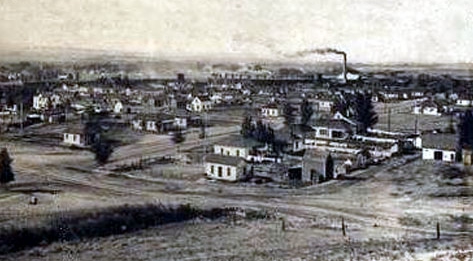
Sheridan, looking north, 1890's.
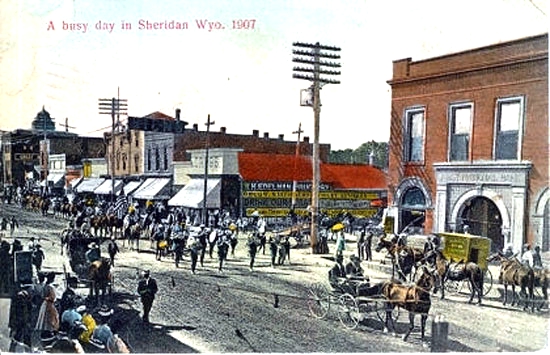
Parade, 1907, corner of Main Street and Loucks.
The building with the arched entrance is the First National Bank, organized in 1890. The building
was replaced in 1909.
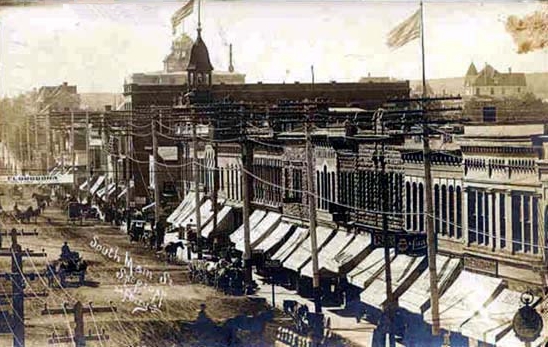
Main Street, looking south, approx. 1905
The building with the cupola is the City Hall. The three-story building between it and the
domed building, is the Bank of Commerce and Masonic Temple. Behind the Bank of Commerce is the domed courthouse.
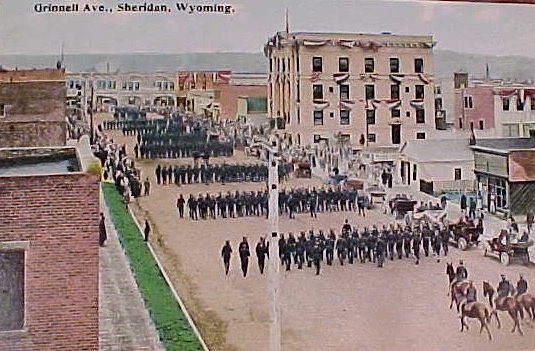
Grinnell Ave., Sheridan, looking west to intersection with Main.
The brick building on
Main with the bunting is the Meyer-Barr Building constructed in 1902. The bottom floor
has housed at different times a restaurant, a saloon, a music company and a
book, stationery store and gallery. Upstairs there have been an Eagles aerie,
a Knight of Columbus and and a business school. The four-story building on the right is the
City Hall.
C. H. Grinnell was with J. R. Phelan and George T. Beck a founder in 1893 of the Sheridan
Fuel Co., the first commercial mining company in the Sheridan area. Beck was
a partner with Wm. F. Cody in the founding of Cody, Wyo. Beck was also
the Democratic candidate for governor in 1902. Grinnell, on the other hand was in
his electorial efforts more successful in the same year, being elected city
water commissioner.
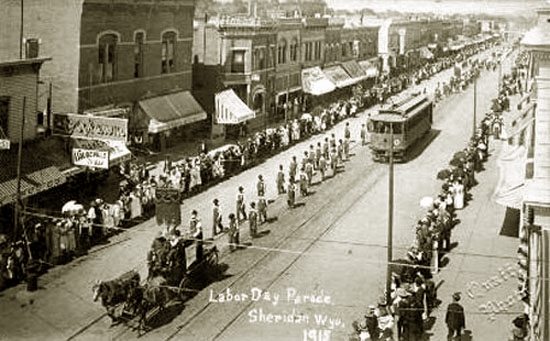
Labor Day Parade, 1915.
The two-story building with the diagonal entrance was the location for the
Bank of Commerce from 1894 to 1904 when it moved to the corner of Main and Brundage.
According to a city directory
published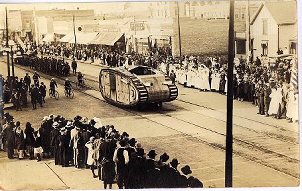 by Dinsmore & Wilson in 1894,
the City had four churches; three banks; two newspapers, The
Sheridan Post , a "seven column, eight pages Republican newspaper" and The Sheridan Enterprise, "a seven
column, four paged Democratic weekly" as well as two brick yards, a soda water
manufactory and bottling works and a two-story brick city hall. After waxing eloquently about the improvement
in the City, twice extolling Sheridan as the "Denver of the northwest", the
Editor could hardly restrain himself: by Dinsmore & Wilson in 1894,
the City had four churches; three banks; two newspapers, The
Sheridan Post , a "seven column, eight pages Republican newspaper" and The Sheridan Enterprise, "a seven
column, four paged Democratic weekly" as well as two brick yards, a soda water
manufactory and bottling works and a two-story brick city hall. After waxing eloquently about the improvement
in the City, twice extolling Sheridan as the "Denver of the northwest", the
Editor could hardly restrain himself:
"The climate is the most salubriuos [sic] and charming in the world, being specially kindly to persons affected
with pulmonary troubles. Dry pure air, not a germ of malaria, or other common
deseases [sic], a confirmed invalid is known. In summer a refreshing breeze is usually gently blowing, invigorating
everything and causing those happy, energetic people who form Sheridan's population, while in winter the
friendly 'chinook' wind mitigates the cold, killing winters of the Dakotas."
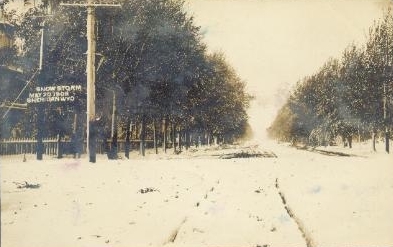
Snow storn of May 20, 1908
As can be seen from the photo and the discussion of the
great die-off with regard to cattle, the
friendly chinooks do not always mitigate the cold.
Sheridan Photos continued on next page.
|